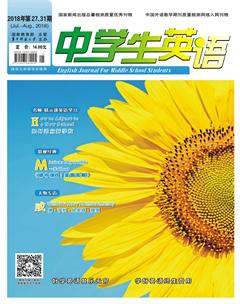CoolJob: Rethinking How Plants Hunt for Water 有趣的职业:反思植物是怎样寻找水源的
石斯琳
José Dinneny wants us to see plants as strange.
约瑟·迪涅尼想让我们以不同寻常的眼光看待植物。
Plants have no brain and no nervous system. Yet they take in different kinds of information and can make good decisions. They also find water without sight or touch.
植物没有大脑,没有神经系统,但却能接收各种信息,做出正确的选择。它们还能在没有视觉或触觉的情况下探寻水源。
They are everywhere in our lives: lawns, salads and pots on a sunny windowsill1. Theyre so familiar that its easy to forget how odd they really are.
植物遍布我们生活的各个角落:草坪,色拉,以及摆放在窗沿上沐浴阳光的盆里。它们是生活中的常客,但因为太常见以至于我们忘了它们实际上有多么非同寻常。
Dinneny is a plant biologist2 in Stanford, California. He says the excitement of discovering plants alien3 ways drives him to explore how roots search for water. His research group “runs on curiosity4,” he says. He conducts projects just to discover how plants work. He once studied plants trying to grow in difficult places. Now hes focusing on ways to figure out whats happening in roots.
迪涅尼是加利福尼亚州斯坦福大学的植物生物学家。他说,正是发现了植物这种奇异的生活方式的惊奇感促使他去探索植物的根是怎样寻找水源的。他说,他所在的研究团队是“基于好奇心成立的”。他实施这个项目的目的是探求植物本身是如何生存的。他曾经研究过在恶劣环境下生存的植物。现在他则关注植物根的作用方式。
To study how plants grow those roots, biologists often start seedlings in petri dishes5 with a nutrient6 gel7 instead of soil. This lets researchers experiment with lots of plants in the lab. But this is very different from how plants grow in real life. For more realism, Dinneny and his colleagues created a system called GLO-Roots. It creates a special view of roots in soil.
生物学家在研究植物的根如何生长的时候,通常先在皮氏培养皿里培养幼苗,并用营养凝胶代替土壤。研究者们利用这个方法可以在实验室中培植各种植物。但这种培植方法同在真实环境中植物的生长方式存在很大差别。为了营造更加真实的环境,迪涅尼和他的同事们研发了一个叫做GLO根系统的系统。这个系统为研究生长在泥土里的根茎提供了特殊的视角。
In the GLO-roots system, plants grow their roots in soil held between two clear plates. The roots weave8 among air pockets, micro rivers and clots9 of dirt. Its like mini versions of the conditions that roots find in the ground. But these roots are special: They glow when various genes turn on in this twinkling underground observatory10. Computers analyze where that glow shows up. And that gives researchers clues to how roots are responding to their environment.
在GLO根系统中,植物的根在夹在两片透明板之间的泥土里生长。根在气穴,微小水流以及尘土块中迂回延伸。这种模拟条件就像是根在地底下生长的迷你版本。但是这些根很特殊:在这个透亮的地下模拟观测设备中,各种不同基因一激活,根就会生长。电脑会分析哪里的根生长了。研究者根据这些线索来分析植物的根是如何对环境做出反应的。
Thrusting11 out a side branch to seek out water depends on local soil conditions, Dinneny and his colleagues learned. Its shown that the roots tissues12 can sense water differences at points only about 100 micrometers (around a thousandth of an inch) apart.
迪涅尼和他的同事通过研究了解到,植物会不会伸出侧根去寻找水源,取决于当地土壤条件。研究表明,根组织能分辨出100微米(大約千分之一英寸)开外的水份条件的不同。
For much of his childhood, Dinneny was interested in deep-sea creatures and ocean exploring. But plants, it seems, have turned out to be strange enough.
迪涅尼在大部分童年时光都对深海动物以及海洋探索充满兴趣。但是现在看来,植物也是一种足够奇特的生物。
Notes:
1. windowsill n. 窗台;窗沿
2. biologist n. 生物学家
3. alien adj. 外国的;陌生的;相异的
4. curiosity n. 好奇,好奇心
5. petri dish 培养皿(皮氏培养皿)
6. nutrient adj. 营养的;滋养的
7. gel n. 凝胶,胶体
8. weave v. 编织;迂回前进
9. clot n. 凝块
10. observatory n. 观测台
11. thrust vt. 插 vi. 插入
12. tissue n. 组织

